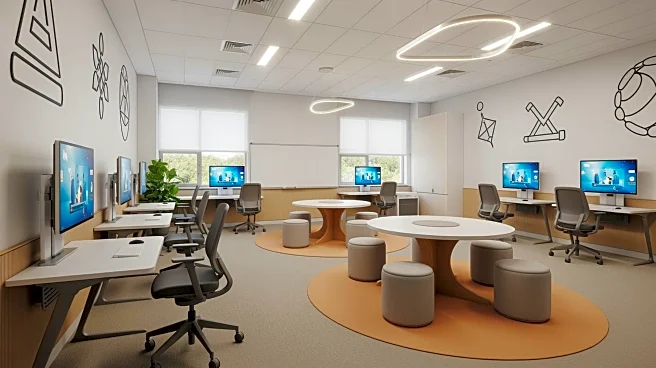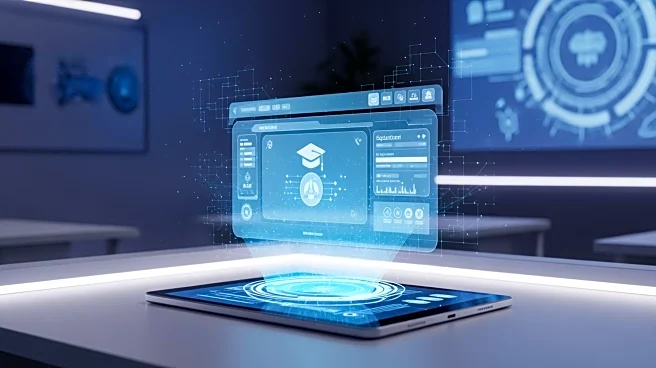What's Happening?
At the EDUCAUSE 2025 conference in Nashville, education technology leaders discussed the evolving expectations of students in higher education. The focus is shifting from transactional systems to more personalized, student-centered designs. This change
is driven by the need for higher education institutions to adapt to the post-pandemic era, where students demand more personalized interactions with the technology systems they use. Panelists highlighted the importance of creating systems that make students feel connected and engaged, rather than overwhelmed by disparate offices and applications. Institutions are now exploring ways to integrate legacy systems with modern platforms to improve interoperability and enhance the student experience.
Why It's Important?
The shift towards student-centered design in higher education is significant as it addresses the growing demand for personalized learning experiences. This change could lead to improved student retention and success rates, as students feel more supported and engaged. By adopting modern systems and technologies, institutions can better meet the needs of today's students, who are accustomed to seamless digital interactions. This transformation also presents opportunities for educational institutions to remain competitive and relevant in an increasingly digital world. The focus on student experience is not just a philosophical shift but a necessary response to financial and recruitment pressures faced by universities.
What's Next?
As higher education institutions continue to adapt, they are likely to seek more input from students to guide technology updates and system improvements. This could involve leveraging student councils and other groups to ensure that changes align with student needs. Additionally, the use of artificial intelligence and predictive analytics may become more prevalent, allowing institutions to anticipate and address student needs proactively. The ongoing dialogue about student success will likely lead to further innovations in educational technology and system design, with a continued emphasis on creating a cohesive and supportive learning environment.
Beyond the Headlines
The move towards student-centered design in higher education also raises ethical and cultural considerations. Institutions must balance the use of technology with the need for human interaction, ensuring that students do not feel isolated in a digital-first environment. Additionally, there is a need to address potential disparities in access to technology and support services, ensuring that all students benefit from these advancements. As educational institutions navigate these changes, they must remain mindful of the diverse needs and preferences of their student populations.













